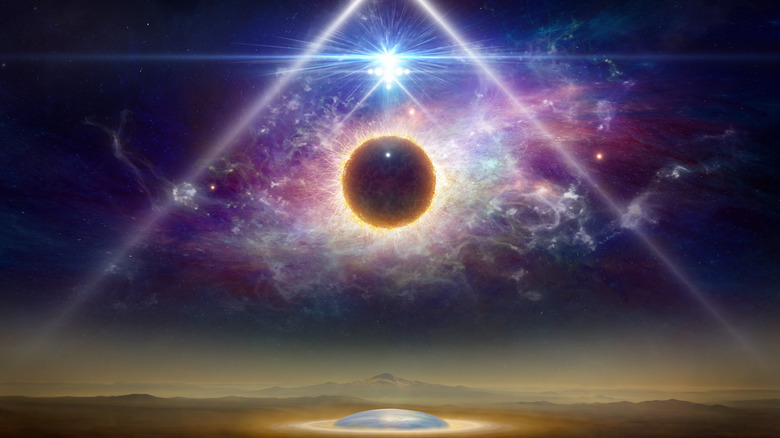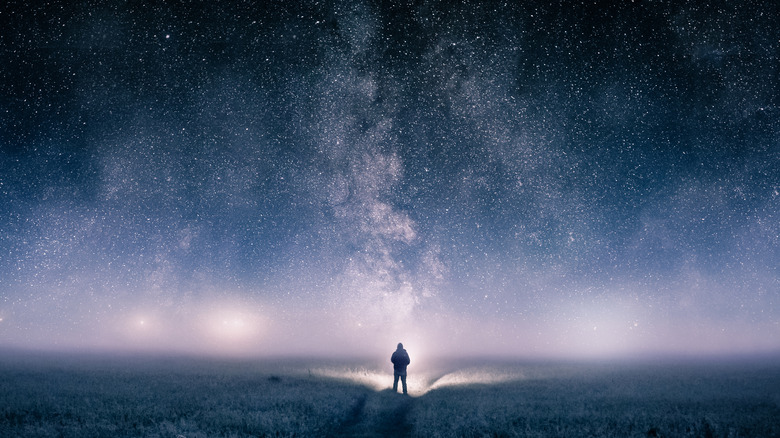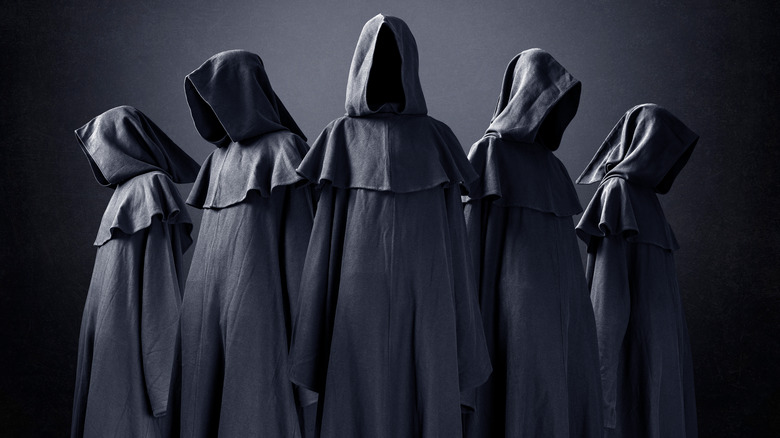The 2,000-Page, Mystical, Anonymous Urantia Book
Imagine, for a second, that someone found an ancient, tattered tome of previously unknown "spiritual" writings buried under the dirt in a basement in some hollowed-out city. These aren't scattered fragments of letters and parchments like the mystical lore of Jewish Gnosticism, or the church-refuted books of the Apocrypha. This is a bound, comprehensive, first edition, self-proclaimed "revelation" from interstellar beings, angelic hordes, counsels of celestial creatures fathomless in their intentions. They're highly hierarchical, duty-bound, in service to the throne of the source of all existence. And while we're at it, the book is anonymous. And 2,000 pages long.
Now substitute "ancient basement" for 1920s Chicago. There's a non-profit organization there that claims they were contacted by extradimensional beings from the "millions of inhabited planets" in the universe. The person in their group who was contacted is a secret. "Contact Commissioners" wrote down in a book whatever it was that was communicated. This non-profit has enshrined their tome. They're dedicated to protecting it, and it still exists to this day. How were they contacted? They can't explain it. It was just, in no way, related to psychic phenomenon, spiritism, seances, or things like that. Oh, and the book is 2,000 pages long.
No, this tale isn't fictional. It's chronicled on the Urantia Foundation website, where they tell us that they are "Custodians of the Urantia Book since 1950." Also on the docket: FAQs such as, "Who is God?" "What is Mind?" and "What is Evolution?"
A New-Age sci-fi mashup featuring aliens, angels, and Jesus
"The Urantia Book" describes things like the governments of extraterrestrials and/or spiritual beings (they're basically the same), their reasons for intervening in Earth (aka "Urantia"), and has a big section on Jesus (he's an enlightened alien). It reads like part science fiction, part New Age, and part imitation Judeo-Christian theology, all written in a supremely odd, mechanical fashion. It describes the cosmos as directed by a pecking order of "manifestations," "pilgrims," "instigators," "receivers," who join things like "the mortal finaliter corps" and go "on eternity service."
Paper 27, titled "Ministry of the Primary Supernaphim," says, "The instigators of rest are the inspectors of Paradise who go forth from the central Isle to the inner circuit of Havona, there to collaborate with their colleagues, the complements of rest of the secondary order of supernaphim." Paper 93, "Machiventa Melchizedek," says, "A corps of twelve served in conjunction with the Life Carriers. A later corps of twelve became receivers for your world shortly after the Caligastia secession and continued in authority until the time of Adam and Eve." Paper 163, "Ordination of the Seventy at Magadan," says, "The Master [Jesus] regarded the wise investment of excess earnings as a legitimate form of insurance against future and unavoidable adversity. When the apostolic treasury was overflowing, Judas put funds on deposit to be used subsequently when they might suffer greatly from a diminution of income."
True believers and an online Urantia University
Is it a work of fiction like L. Ron Hubbard's "Dianetics," which formed the foundation of Scientology? An augmented reality (AR) game gone off the rails?
If you're one of "The Urantia Book's" true believers who've left testimonials online at Truth Book, the volume represents "a classic and even total paradigm shift." One reader says, "My ultimate thrill fantasy: A UFO occupant, or angel, shows up in my back yard, or bedroom ... in the middle of the night and gives me a book. Then they leave, or disappear." Another says, "Finally, the New Testament miracles and the death on the cross made sense; afterlife was logical, and there was a reason for my existence," and then goes on to say that "The Urantia Book" is "internally consistent and scientifically credible." Yet another reader says, "I would carry it with me to work, read it on the bus, study it at night, turn to it in times of despair, and come to love the truth it held. The gaps were closed, my questions were answered, my heart was filled, and the harmony chord of truth rang in my soul."
To glean a broader summary of "The Urantia Book's" themes and narrative, there's even the Urantia University Institute. They offer online, university-style classes, complete with curricula, coursework, audits, and materials, on topics such as "1001: General Overview of The Urantia Book" to "1020: Celestial Artisans."
A book like any other, with cult-like potential
At the very least, "The Urantia Book" is a creation of utmost obsession. There is precious little in the way of academic discussion about it, or journalistic inquiry. One 2006 article in The Atlantic cites it in a list of cult (perhaps literally) books like "The Necronomicon" and "The Aquarian Gospel of Jesus the Christ," describing it as a mashup of "William Blake's visions, Mark Twain's 'Letters From the Earth,' and an astronomy textbook."
In a 1995 book titled "Urantia: The Great Cult Mystery," author Martin Gardner claims to have gotten to the bottom of the book's mystery, saying that it had been written by two former Seventh-day Adventists: psychiatrist William Sadler (1875-1969) and his brother-in-law, Wilfred Kellogg (1876-1956). Gardner claims that entire passages in "The Urantia Book" are lifted wholesale from "other cult books," and goes on to compare the book's followers to other Seventh-day Adventist offshoots, like David Koresh's Waco, Texas Branch Davidian cult. Folks might remember that those Branch Davidians set their compound on fire — with themselves inside — when the FBI raided it in 1993.
For the sound of mind, "The Urantia Book" can be read like any other piece of speculative fiction, provided you want to devote the time to read all 2,000 pages of it. There's even a 38-hour audio version available. Not that we're recommending it, mind you. Some books really are best left unopened.



